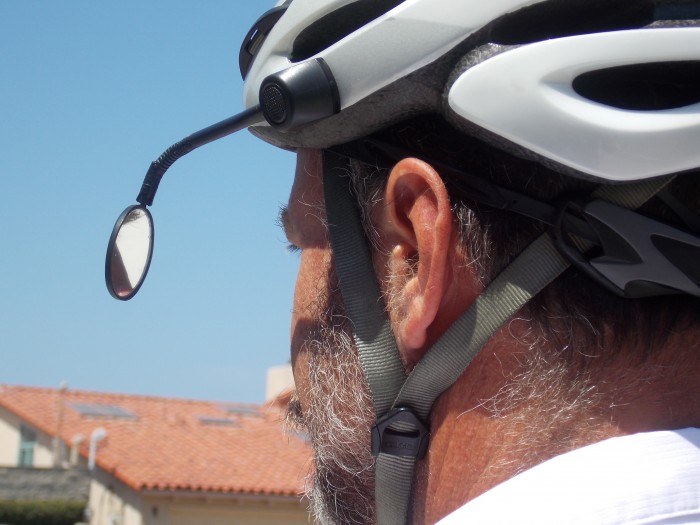The Cycling Mirror
The Over-The-Shoulder Check
Car Back
Cars From Nowhere
One Scenario
Move Over
Types of Cycling Mirrors
Handlebar Mirrors or Bar End Mount
Pros:
- Don’t give you migraines like glasses or helmet mirrors because they are easier to use for most riders.
- Heavier-duty than helmet or glasses mirrors; better longevity.
- Can be bigger for more easy viewing.
Cons:
- Easily knocked off your bike or out of adjustment.
- Can make your bike wider when you need to squeeze through tight places ( only models that extend outward though)
- Require you to look further away from the road in front of you than helmet and glasses mirrors do.
- What you see behind you depends on which direction your handlebars are pointed. Helmet and glasses mirrors allow you to turn your head and look almost anywhe.e
- Under-the-bars models can require you to move your arm to see.
Bar end or handlebar mounted mirrors are available for any bike in different configurations. Serious roadies might prefer streamlined versions.
Helmet Mirrors
Pros:
- Allows you to see behind you and at 360 degrees no matter where you turn your head — unlike handlebar mirrors that look only behind the bike.
- Lightweight and versatile.
- Affordable.
- Easy to mount and tucks away in your gear.
Cons:
- Attached with an adhesive that wears out and can come loose.
- Can bend and crack at the stem.
- The mirror sometimes attaches to the stem with a ball-and-socket joint that readily breaks. The joint wears out, and the mirror flops around.
- You can’t stuff your helmet into a bag or toss it onto a chair or you’ll break the mirror off.
Plenty of helmet mirror configurations. Some types minimalistic, some moderate in size.
Glasses (Eyewear) Mirrors
Pros:
- Attaches and detaches easily and can be adjusted if you knock it out of whack.
- Gives you a good excuse to wear glasses even if you don’t normally. This helps keep dust, bugs, and debris out of your eyes,and helps prevent UV damage to your eyes, if you choose to use sunglasses.
- Some models also mount to your helmet visor.
Cons:
- Can give you migraine headaches from looking at them at an odd angle. Some cyclists find them hard to use.
- Flimsy, easy to knock out of position.
Eyeware or glasses mirrors are typically the smallest mirrors out there at about 1 1/8-inch in diameter
Convex Versus Super-Convex
Depending on size and how much you pay, different cycling mirror surfaces may also be an option. A standard convex allows you a medium-wide field of view and better long distance magnification. It’s great for roads in areas with less traffic. Super-convex allows for the widest field of vision possible. This type is more appropriate for urban areas with high density traffic. The optics are better, designed to be free of inconsistencies or ripples and they typically have been treated for scratch and shatter resistance.
